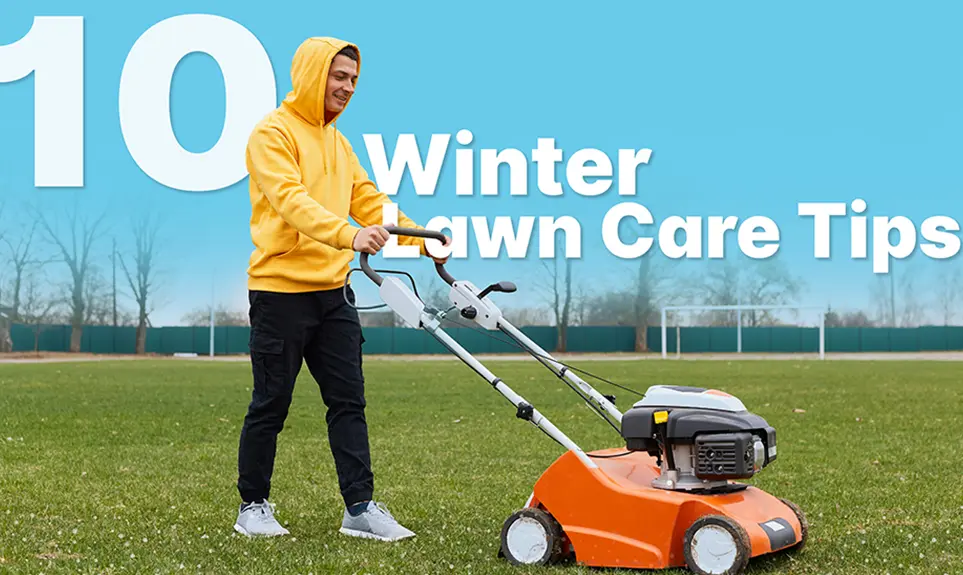With snow already falling in several places across the country, many lawn care service providers are beginning their winter care preparation for lawns. But do you know what? Having a maintenance and service checklist is not something that everyone does.But really, they should. Providing a checklist to technicians can help with both consistency and efficiency.
Each job site is different, some are quiet, and some are loud. But none of them are exactly the same. It is this novelty that can create the opportunity for simple things to fall through the cracks—regardless of how much experience a technician has. Using a checklist helps minimize these oversights allowing technicians to feel confident in the work they are doing. If your technicians are going to stay on track, and your company stays ahead of competitors, you need to ensure your people have what they need to succeed.
Make sure an up-to-date maintenance plan and checklist are prepared and available to anyone performing service in the field. Making sure that what we discuss below tops your list will help keep your lawn care professionals on track and ensure your technicians are properly caring for customers’ lawns and getting the desired results in springtime.
10 Winter Lawn Care Tips
1. Clear debris
Over the course of this season, leaves fall from trees, and perennial plants die out. Make sure to remove any of these leaves and other debris that has made contact with grass. Allowing debris to accumulate will cause dead patches on the lawn; so if a customer’s lawn is to be kept healthy, it is important to be mindful of debris and commit to its removal. Using a rigid leaf rake or a leaf blower, collect and mulch the debris.
2. Rake out moss and pull weeds
Remove moss that has accumulated in the less sunny parts of the lawn. Due to the change in season, light-blocking trees may have lost their foliage, so now is a good time to reseed these areas. In other areas, the soil could be low in grass-friendly nutrients, which may lead to the development of moss. Remove the moss as well as any weeds, roots, and anything developed in those areas.
3. Aerate the lawn
Fall is the perfect season to aerate the lawn. Heavy foot traffic and the weight of machinery may have caused soil beneath the grass to become compacted. Severely compacted soil can become cracked and dry, and lead to common landscaping problems, and poor nutrient uptake by the grassroots.
To remove compacted soil, use an aerating tool to perforate the lawn. Aerating provides extra air for the grass and allows water and nutrients to penetrate deeper into the soil, which promotes stronger roots. Use a plug remover for the best results, even if it takes more time. For basic aeration, you can use a spiked wheel, but for larger lawns, motorized aerators are likely to provide the best results.
4. Overseed bare spots
Overseeding is a crucial step to making a thick, healthy, and weed-free lawn. You may have observed in your customers’ lawns that they are thin or weedy in spots; overseeding will help make the lawn better-looking without having to start from scratch. The overseeding process is as easy as loosening the soil and sprinkling it with additional seeds. A smaller lawn or isolated area can be seeded by hand; if you are working with a larger area, then a drop or rotary spreader may be helpful.
Because of their greater accuracy, drop spreaders are a good choice for larger areas. This increased accuracy is especially useful when working with flower gardens, sidewalks, and ponds. Drop spreaders will distribute seeds at approximately the same distance consistently. If you need to cover a larger area, a broadcast spreader will allow you to cover an area three to four times larger than with a drop spreader.
Keep in mind, however, that while a broadcast spreader will allow you to cover a larger area more quickly, you are losing the precision and accuracy that you get with a drop spreader. Regardless of which tool you are using, it is important to keep the soil moist after seeding if you are to get the results that you expect.
5. Prune trees and shrubs
Winter can be dangerous. Wind, rain, and snow from winter storms can cause damage to shrubs and trees. If they are to heal properly, regular pruning is necessary. Pruning a tree stimulates growth and encourages the healing process. Keeping a tree properly trimmed will help make sure a tree recovers from wounds and damage during the winter months.
Proper pruning doesn’t merely stimulate growth but also makes a tree ready to take on the destructive insects and pathogens that come with the warmer weather. However, not all trees and shrubs need to be pruned early in the winter season. While dead and diseased branches are pruned, overgrown branches can be appropriately trimmed to maintain a tree’s structure.
Pruning shrubs during dormant times makes their recovery easy for next year’s bloom. Pruning a shrub before any new growth starts can enable the shrub to devote its energy to growth as spring rolls in. Pruning and trimming trees and shrubs in winter is easy as their foliage is missing during their dormant months.
6. Mow high
Lawn mowing is the last item on a winter property maintenance checklist. However, failing to mow the lawn before winter sets in can lead to an array of trouble ranging from water buildup to fungal growth and pest infestations as the temperature changes. You can stay clear of these winter lawn care troubles by making lawn moving an important part of your winter care checklist.
As the height of the grass is directly proportional to the health and depth of the roots, grasses must be half an inch higher than the standard summer height. Leaving the grass longer than usual will promote root growth and result in a thicker and healthier-looking lawn as spring arrives.
7. Fertilize the lawn
Winterizers, i.e., winter fertilizers, play a crucial role in encouraging food storage and promoting proper root growth during the dormant months. While proper application of fertilizers after the final mowing will help the lawn survive the damaging effects of cold winter, overfertilization can cause unhealthy growth.
On the other hand, applying winterizers too early can prevent your lawn from reaching its full potential. If your customers wait for too long to apply winterizers, their lawns may fall prey to ice and frost. Hence, it is crucial to get the timing right. Although the prime application time is usually November, some lawns may need winterizers a bit early before the cold settles in.
8. Protect sensitive plants
Plants are susceptible to injuries caused by cold weather. Winter mulching is a great way to protect your sensitive plants and shrubs from erosion and loss of water. You can use different organic materials like straw, bark, pine needles, and chopped corn cobs to create a 2-inch mulch near the soil. Anti-transpirant sprays offer a protective waxy coating that reduces water loss in leaves. Also, burlap wrapping can shield plants from salt spray and harsh winter winds. Tying branches together can help plants deal better with snow buildup.
9. Ensure winter watering
Even normal-looking plants and shrubs may suffer from dryness and frost resulting in dead roots. Winter watering is a neat little trick to strengthen grassroots and help them withstand cold temperatures. As soil holds moisture longer in winter, watering the lawn occasionally, even every other week is sufficient.
10. Apply pre-emergent herbicides
Pre-emergent herbicides can help control winter weeds effectively. They act as a barrier between the soil and the germinated seedlings, thus preventing them from sprouting out of the soil. For best results, they need to be applied in the late fall when the temperature drops below 70 F.
Bonus: Spray dormant oils on fruit trees
Spraying dormant oils in winter can control damage caused by insects in spring. Soft-bodied insects and pests like aphids, mites, caterpillars, and more are more vulnerable during the winter. Dormant oils like horticultural oils don’t merely prevent fungal spores but also kill the eggs of insects. Best of all, these low-impact pesticides never harm pollinators.
Conclusion
Having a maintenance and service checklist is crucial for lawn care providers as it helps with both consistency and efficiency. Each job site is different, so using a checklist minimizes oversights and allows you to feel confident in the work they are doing. Keep an eye on our resources for growing landscaping businesses for more tips and industry-wide best practices.



